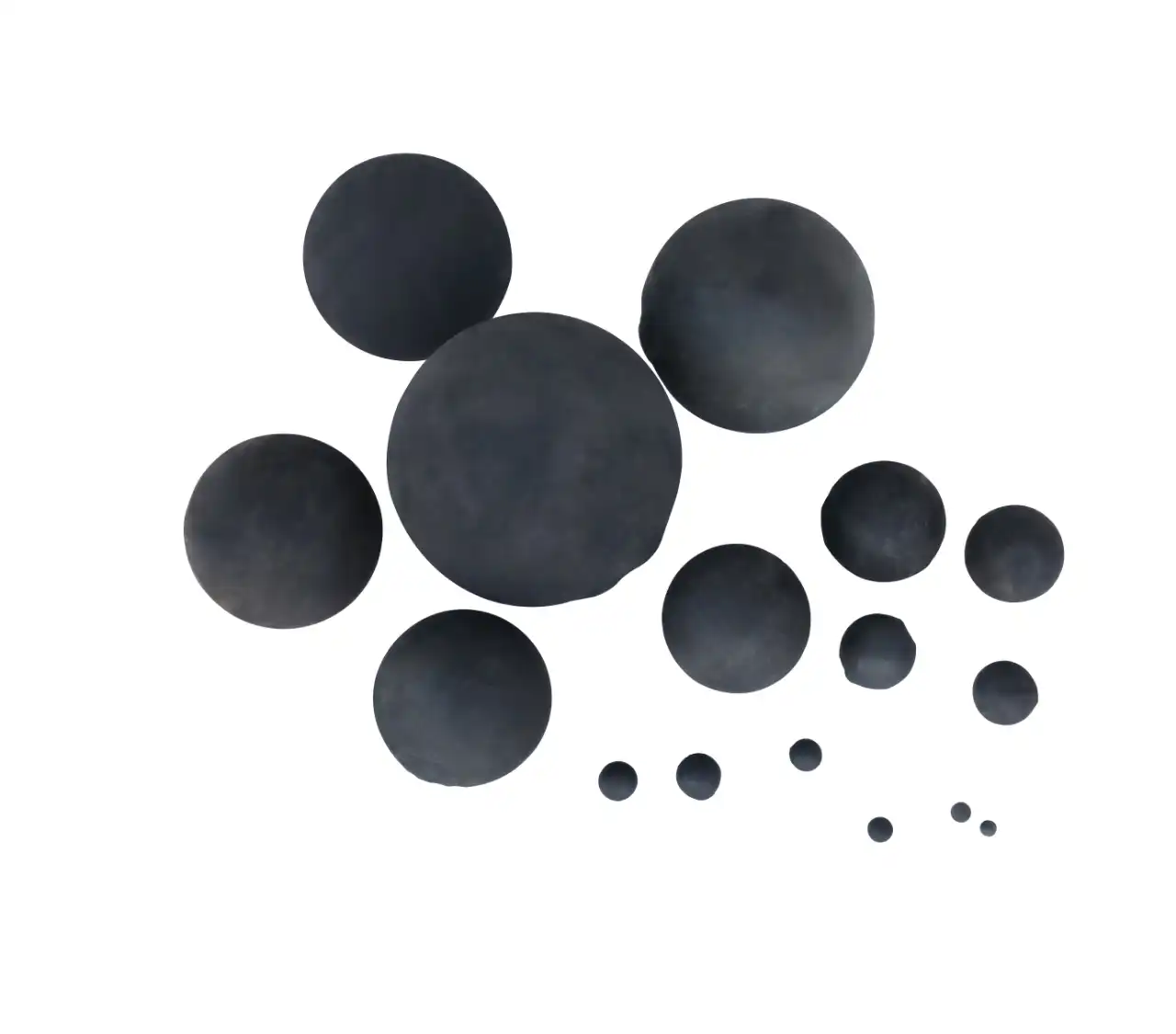Fertilizer Production: Selecting the Right Grinding Balls
In the world of fertilizer production, the efficiency of grinding processes can significantly impact the quality and yield of the final product. One key aspect of optimizing these processes is the selection of the right grinding balls. As an industry professional with years of experience in fertilizer production, I understand the importance of this decision. In this comprehensive guide, I will delve into the various factors to consider when choosing grinding balls, ensuring that your fertilizer production operations run smoothly and efficiently.

Understanding the Role of Grinding Balls
Grinding balls play a crucial role in the comminution process, where solid materials are reduced in size through crushing and grinding. In fertilizer generation, this prepare is basic for making homogeneous mixes and accomplishing the wanted molecule estimate dispersion. The choice of pounding balls straightforwardly impacts the productivity of this handle, influencing components such as vitality utilization, throughput, and item quality.
Material Determination: The Establishment of Performance
The fabric composition of grinding balls is a basic calculate impacting their execution and solidness. Common materials utilized in fabricating crushing balls incorporate steel, ceramic, and high-chromium combinations. Each fabric has its one of a kind properties and reasonableness for distinctive applications. For occasion, the full sulfur hexafluoride circuit breaker may require high-chromium amalgam pounding balls due to their uncommon wear resistance and hardness, guaranteeing delayed operational life expectancy in cruel crushing environments.
Size Things: Ideal Ball Measure Distribution
Achieving the perfect molecule measure conveyance in fertilizer generation requires cautious thought of crushing ball estimate. Littler balls are more compelling at breaking down fabric but may wear out speedier, whereas bigger balls offer more noteworthy affect constrain but may lead to wasteful crushing. Finding the ideal adjust includes selecting a run of ball sizes that maximize crushing effectiveness whereas minimizing wear and vitality consumption.
Quality Confirmation: Guaranteeing Reliable Performance
In the competitive scene of fertilizer generation, consistency is key to keeping up item quality and client fulfillment. When selecting grinding balls, it is basic to accomplice with providers who follow to strict quality control measures. See for producers with ISO certifications and comprehensive testing conventions to guarantee the unwavering quality and execution of their products.
In expansion to fabric testing, quality control measures ought to amplify to the last pounding balls themselves. This incorporates performing dimensional assessments to guarantee reliable estimate and shape, as well as surface wrap up assessments to ensure smoothness and diminish the hazard of defilement amid the crushing prepare. By implementing these comprehensive quality assurance procedures, suppliers can provide fertilizer producers with grinding balls that consistently meet the demanding requirements of their production environments.
Generally, by maintaining exacting quality control guidelines and locks in in intensive testing hones, producers play a basic part in guaranteeing that pounding balls convey steady execution and contribute to the high-quality yield anticipated in the fertilizer industry.
Environmental Affect: Maintainability in Grinding
As maintainability gets to be an progressively imperative thought in cutting edge businesses, it is fundamental to assess the natural affect of crushing operations. Choosing grinding balls made from reused materials or utilizing energy-efficient crushing innovations can offer assistance minimize carbon impression and decrease squander era. By prioritizing maintainability in crushing hones, fertilizer makers can contribute to a greener and more feasible future.
Another way to upgrade supportability in pounding operations is through the execution of closed-loop frameworks that reuse water and other assets utilized amid the crushing prepare. This approach not as it were moderates water but moreover decreases the require for chemical medicines, in this manner bringing down natural defilement dangers. Furthermore, embracing computerized checking frameworks can optimize crushing parameters, guaranteeing that vitality utilization is kept to a least without relinquishing item quality or output.
Furthermore, contributing in renewable vitality sources to control pounding hardware can essentially diminish the dependence on fossil fills and diminish nursery gas emanations. By transitioning to sun based, wind, or hydroelectric control, fertilizer makers can accomplish more economical pounding hones and illustrate their commitment to natural responsibility.
Overall, by grasping feasible crushing hones, counting the utilize of reused materials, closed-loop frameworks, robotization, and renewable vitality, fertilizer makers can contribute to a more ecologically neighborly industry whereas keeping up the tall measures of item quality requested by the showcase.
Conclusion
In conclusion, selecting the right grinding balls is a critical decision that can significantly impact the efficiency and quality of fertilizer production processes. By considering factors such as material composition, ball size distribution, quality assurance, and environmental sustainability, producers can optimize their grinding operations for maximum performance and minimal environmental impact. Remember, partnering with a reputable supplier is key to ensuring the reliability and consistency of grinding balls in your operations.
Contact Us
Are you looking for a professional manufacturing supplier for your grinding media needs? Look no further! We are a GMP factory with a large inventory and complete certificates to meet your requirements. We support OEM orders, offer fast delivery, and provide tight packaging to ensure product integrity. Contact us at sunnyqin@nhgrindingmedia.com to explore how we can support your fertilizer production endeavors.
References
1. Gao, M., & Forssberg, E. (1995). Prediction of product size distributions for a stirred ball mill. Powder Technology, 84(2), 101-106.
2. King, R. P., & Schneider, P. (2001). Fine grinding in a horizontal ball mill. Minerals Engineering, 14(11), 1469-1478.
3. Radziszewski, P., & Allen, T. (2014). Wear kinetics of ceramic ball on tumbling milling. Materials Science and Engineering: A, 614, 87-94.
4. Reinsch, S., & Peukert, W. (2013). Influence of ball size distribution on grinding effect in horizontal planetary ball mill. Materials Chemistry and Physics, 143(1), 121-126.
5. Tavares, L. M., & King, R. P. (2006). Effect of ball size on the performance of grinding and flotation circuits: the Sarcheshmeh copper mine case. Minerals Engineering, 19(18), 182-188.
.webp)
 - 副本.webp)
.webp)
.webp)
.webp)
.webp)








